The ways of development of guitar art in Russia are peculiar and original. Being a five-string guitar, the guitar was brought to Russia by Italian musicians in the 18th century, but did not become widespread, remaining an exotic decoration. Later, at the beginning of the 19th century, the Russian public became acquainted with the “Spanish” six-string guitar, which by that time had become quite popular in Europe. It was presented in Russia by famous foreign guitarists M. Giuliani, F. Sor and others.
The victory in the Patriotic War of 1812 extremely accelerated the growth of national self-awareness and caused an upsurge of patriotic feelings and sentiments in all levels of society. Interest in the historical past of the Motherland, in folk art, in particular in folk songs, is rapidly growing. Urban romance is gaining wide popularity. Based on everyday folklore, it represents a unique layer of Russian musical culture with a characteristic structure and melody, with expressive means unique to it.
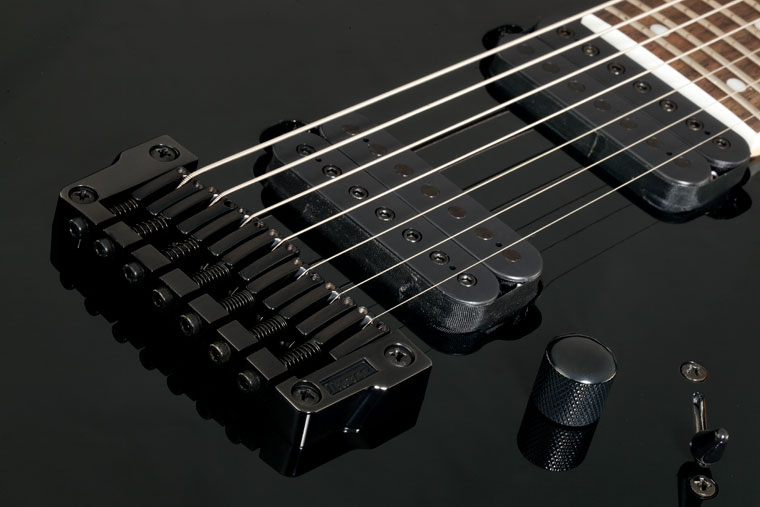
Academician B. Asafiev wrote about this in his work “Musical Form as a Process”: “There was no psychological realism with its analysis of personal mental life yet, the romantics had not yet gone on a rampage, putting forward a culture of feeling, and the masses were already eager to hear “simple speech” and heartfelt and exciting melody; for the dominance of nepotism, sensitivity, the cult of “simple morals” of simple-minded people and “homeliness”, tenderness for nature, quiet contemplation was approaching. The intonations corresponding to all this evoked in the music a romantic melody, sincere, heartfelt; both the words and the melody, which for the most part did not lay claim to long-term development, were surrounded by a single intonation system - “sounding from heart to heart”1.
Appeared in the last decade of the 18th century string guitar with its harmonic structure and timbre coloring it turned out to be very close to the nature of Russian folk song and the genre of urban romance that arose on its basis. Its use to accompany the voice made it possible to most subtly reveal the lyricism of intimate experiences that constitute the main theme of urban romance. The best works of this genre, created by A. Alyabyev, A. Varlamov, Titov and other talented composers, were included in the golden fund of Russian music.
Russian musicians, realizing the great possibilities inherent in the seven-string guitar, are beginning to create a solo repertoire for it. First, they arrange for her excerpts from popular operas and other works by Russian and foreign composers. Then they create variation cycles, quite complex in texture and concert in character, based on folk melodies. (As a striking example, let us cite A. Sihra’s variation cycle on the theme of the Russian song “Among the Flat Valley.”) In addition to the variations, miniatures are created, graceful and melodic, touching the soul of a simple Russian person. Attempts are also being made to create large shape, in particular the sonata, concerto for guitar and orchestra.
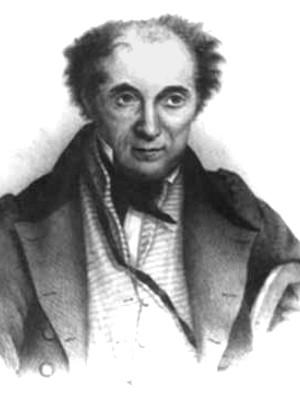
Russian guitar virtuoso and composer Andrei Osipovich Sihra (1773-1850)
Extraordinary popularity seven string guitar attracted talented musicians to it. An outstanding role in the creation of the national guitar school belongs to Andrei Osipovich Sikhra. A remarkable virtuoso guitarist, a talented composer, he is undoubtedly the founder of the Russian school of playing the seven-string guitar.
A. Sihra was born in 1773 in Vilna (now Vilnius) in the family of a music teacher. In his youth he performed in concerts as a harpist and played the six-string guitar. Then he became interested in the seven-string guitar, to which he dedicated his entire life. In 1801, the musician moved to Moscow, where he began to create a repertoire for the seven-string guitar and study with his first students.
Sihra, a talented musician, a friendly and charming person, soon became the idol of numerous students and fans.
After Napoleon was expelled from Russia, Sihra moved to St. Petersburg, which he did not leave until the end of his life (he died in 1850). Here he, already a mature musician and teacher, creates his own school of playing the seven-string guitar...
A. Sihra was not only a talented, but also a highly educated musician. He was highly valued by M. Glinka, A. Dargomyzhsky, A. Varlamov, A. Dubuk, D. Field and many other figures of national culture. The famous singer O. Petrov studied guitar with Sihra. The biographical dictionary of the Russian Historical Society called Sikhra “the patriarch of Russian guitarists.” Of his students, the most famous are S. Aksenov, N. Alexandrov, V. Morkov, V. Sarenko, V. Svintsov.
If Sihra was recognized as the head of the St. Petersburg school of seven-string guitar with its characteristic strict “academic” style, then the founder of the Moscow school is rightfully considered Mikhail Timofeevich Vysotsky, whose life and work is another page in the history of Russian guitar art.
Of Vysotsky's students, the most famous were P. Belosein, A. Vetrov, I. Lyakhov, M. Stakhovich and others.
The era of Sihra and Vysotsky is the “golden age” of the Russian seven-string guitar. Its widespread use contributed to the democratization of the art of music.
Variation cycles of Russian guitarists-composers were created on the basis of Russian folk songs. This unique layer of Russian musical culture is an important source for the study of folklore.
The Russian seven-string guitar, sounded in the hands of talented musicians, inspired poets and writers to create beautiful poetic lines.
A. Pushkin called the guitar “sweet-voiced.” Words full of lyricism dedicated to this instrument can also be found in M. Lermontov, A. Fet, I. Bunin, A. Grigoriev, L. Tolstoy, A. Ostrovsky, M. Gorky.
The guitar is depicted in many paintings by Russian and Western European artists: V. Tropinin, V. Perov, I. Repin, An. Watteau, B. Murillo, Fr. Khalsa, P. Picasso and others.
In the middle of the 19th century, interest in the guitar declined not only in Russia, but also in Europe. However, at the end of the 19th and beginning of the 20th centuries, the seven-string guitar began to reassert itself. This was largely facilitated by the activities of enthusiastic musicians who tried to restore the traditions of Sihra and Vysotsky. The most famous of them were A. Soloviev and V. Rusanov.
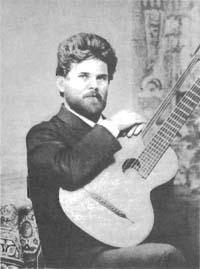
Outstanding Russian guitarist and teacher Alexander Petrovich Solovyov (1856-1911)
Alexander Petrovich Solovyov (1856-1911) - a prominent performer and teacher. He raised many gifted students, such as V. Rusanov, V. Uspensky, V. Yuryev, V. Berezkin and others; created the School (published in 1896), which was the best at that time.
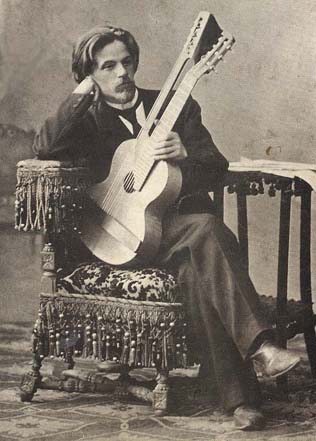
Valerian Alekseevich Rusanov (1866-1918) is a famous historiographer and promoter of the Russian seven-string guitar. He organized the publication of the all-Russian magazine “Guitarist” (1904-1906).
In the period after the Great October Socialist Revolution, M. Ivanov, V. Yuryev, V. Sazonov, R. Meleshko did a lot to popularize the seven-string guitar. They created schools and tutorials for this instrument, original compositions, adaptations and transcriptions, and compiled numerous collections. M, Ivanov wrote the book “Russian seven-string guitar”. These musicians constantly performed as soloists and accompanists in concerts and recorded on gramophone records.
In the post-war years, a new generation of seven-string guitar players grew up, which worthily continues the rich traditions of the national performing school. Among them: V. Vavilov, B. Okunev, B. Kim, S. Orekhov, A. Agibalov. The repertoire of the seven-string guitar was replenished during this time with works by composers N. Chaikin, B. Strannolyubsky, N. Narimanidze, N. Rechmensky, G. Kamaldinov, L. Birnov and others.
Nowadays there is a growing interest in the Russian seven-string guitar in the world. Let us express our hope that new glorious pages will be written in the further history of this beautiful, original musical instrument.
From the history of the seven-string guitar. XVIII-XIX centuries
Nowadays, it is almost impossible to imagine a Russian folk song without a seven-string guitar. However, it gained popularity, displacing the balalaika from the everyday life of the urban population, relatively recently - in the 19th century. Since then, every person gifted with musical abilities along with a love for folk songs and Russian culture pays tribute to this wonderful musical instrument, although, of course, today the six-string guitar is much more in demand and popular both among pop professionals and among music lovers.
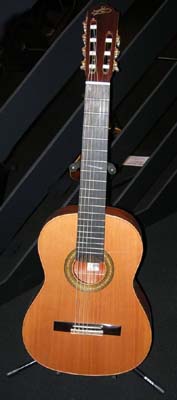
Russian musicians and seven-string guitar
The guitar was the favorite instrument of many famous Russian musicians. A. Alyabyev, A. Varlamov, A. Zhilin, I. Khandoshkin and many other figures of Russian musical culture of the 18th-19th centuries gave preference to the Russian seven-string guitar. In this article we will talk about only some of them: G. A. Rachinsky, A. E. Varlamov, A. A. Alyabyev, P. A. Bulakhov, O. A. Petrov.
Gavrila Andreevich Rachinsky
Gavrila Andreevich Rachinsky (1777-1843) was born in the city of Novgorod-Seversky, in Ukraine. A wonderful violinist and composer, he was very fond of the seven-string guitar, often played it in concerts, and composed variations and plays. For many years, Rachinsky's life was connected with Moscow. In 1795-1797 he studied at the gymnasium at Moscow University, and then worked there as a music teacher for quite a long time. From 1823 to 1840 G. Rachinsky was again in Moscow. It was during this period that he toured repeatedly in St. Petersburg and other cities of Russia, which brought him fame as an outstanding artist.
It is characteristic that back in 1817, in “Moskovskie Vedomosti” (Nos. 24 and 27), G. Rachinsky notified about a subscription to the publication of his twenty works for violin and seven-string guitar. Among the ten guitar compositions, two variation cycles on the themes of Russian folk songs “I walked through the flowers” and “Young Young One” were mentioned, as well as five polonaises, a waltz, a march and a fantasy. But for reasons unknown to us, they were not published.
A man of versatile culture, a “Voltairian,” as they said then, G. Rachinsky was close to Moscow literary circles, in which his name was very popular. At various literary evenings, he often played variations on themes of Russian and Ukrainian folk songs. At one of these evenings, dedicated to the memory of the poet and playwright N. N. Nikolev (his poems formed the basis of such popular songs as “Soar High, Rush”, “In the Evening Blush Dawn”), G. Rachinsky performed his works on the violin , and on guitar. Those gathered in the house of the pupil of the poet I. Maslov, a big fan of the seven-string guitar and the author of compositions for it, were delighted with the skill of the musician. “That evening,” noted the magazine “Son of the Fatherland” (1817, No. 9), “the violin in Rachinsky’s hands and the guitar itself became animated under his fingers and made him wonder.”
It is known that the remarkable musician created fantasies for the seven-string guitar “That evening I was at the postal yard” and “On the banks of the Desna”.
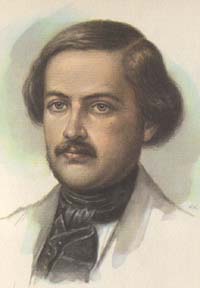
Russian composer Alexander Egorovich Varlamov (1801-1848), author of various popular romances and songs, which are considered folk by many
The creator of many popular romances, Alexander Egorovich Varlamov (1801-1848), was an excellent guitarist. His musical talent showed up early: on his own, the boy learned to play the piano, violin, cello, and guitar. At the age of ten, his father sent him to St. Petersburg, where he was enrolled in the staff of the Court Singing Chapel as a juvenile singer. Noticing the boy’s excellent abilities, the director of the choir, the outstanding Russian composer D. Bortnyansky, began to supervise his studies. According to A. Varlamov himself, he owes his excellent vocal school and subtle knowledge of vocal art to D. Bortnyansky. Having completed his musical education, A. Varlamov served for four years as a teacher of choristers in the church at the Russian embassy in The Hague. Here he already performs not only as a singer, but also as a guitarist. On February 19, 1851, the St. Petersburg newspaper “Northern Bee” wrote in the article “Memories of A.E. Varlamov”: “At another concert (in Brussels), to please the artist giving the concert, (he) played the Rode Variations on the guitar. The purity and fluency of playing a melodic instrument, unknown to many listeners at that time, aroused loud applause; the next day an expression of general gratitude for the pleasure given to the public was published in the French Brussels newspapers.” His performance in The Hague was not the only one; later, in Russia, he often performed as a guitarist in concerts and in the home circle.
In 1823, Varlamov returned to his homeland. He earns his living by teaching lessons in various educational institutions and private houses. At this time, the composer composed a lot, often performed his romances in concerts and among friends, but did not publish them. Since 1832, having received the position of conductor and “composer of music” of the Moscow Imperial Theaters, he settled in Moscow. Here Varlamov finds recognition and support in the Moscow artistic community. His talent was appreciated by the famous tragedian P. S. Mochalov, himself a singer and songwriter; poet and actor N. G. Tsygankov, to whose words A. Varlamov wrote a number of his romances; M. S. Shchepkin, A. N. Verstovsky and other figures of Russian culture.
A collection of the composer's romances, published in Moscow in 1833, brought him great fame. His songs spread with extraordinary speed and were sung by representatives of all classes. A. Varlamov’s romance “The Red Sarafan” became especially famous, which sounded, according to composer N. Titov, “both in the nobleman’s living room and in the peasant’s smoking hut.”
A. Varlamov wrote about 150 romances, most based on the words of Russian poets, some based on folk and own texts. It is characteristic that the texture of the accompaniment of many of his romances is purely “guitar”, for this instrument was especially loved by him. A. Varlamov composed not only romances, but also theater and ballet music.
The last years of the composer's life are connected with St. Petersburg. Here he worked on a collection of folk songs, “Russian Singer,” which remained unfinished. In 1848, A. Varlamov died suddenly. In the Museum of Musical Culture named after. Glinka's manuscript of Varlamov's composition for voice accompanied by a seven-string guitar is kept in Moscow.
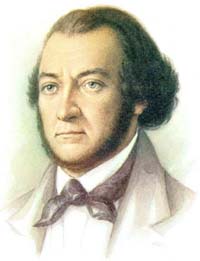
Russian composer Alexander Alexandrovich Alyabyev (1787-1851), author of the famous song “The Nightingale” based on verses by Anton Delvig
The multi-talented composer Alexander Aleksandrovich Alyabyev (1787-1851) also wrote for the guitar. Many of his vocal lyric creations were far ahead of their era. He enriched Russian music with new content and reflected in it the best, progressive aspirations. A leading man of his time, a participant in the Patriotic War of 1812, he introduced into Russian vocal lyrics the motives inherent in the civil poetics of the Decembrists, motives of patriotism, love of freedom, thoughts about the plight of the people, and sympathy for the oppressed. Many of his works have become phenomena of lasting value.
Among his friends are the future Decembrists A. Bestuzhev-Marlinsky, P. Mukhanov, F. Glinka; writers A. Griboedov, V. Dal, V. Odoevsky, famous partisan poet D. Davydov; composers A. Verstovsky and M. Vielgorsky.
Alyabyev's creative heritage is great: 6 operas, 20 vaudevilles, many works for orchestra and chamber ensembles, piano pieces, choral works, over 150 romances. Being an excellent connoisseur of the seven-string guitar, he masterfully arranged works by A. Sihra and S. Aksenov for it and the orchestra. They were first performed by concert guitarist V. Svintsov in 18271. In turn, the guitarists made brilliant arrangements of Alyabyev’s romances.
P. A. Bulakhov. V. I. Radivilov
Pyotr Aleksandrovich Bulakhov (c. 1793-1835), the father of the author of many popular romances P. P. Bulakhov, also played the seven-string guitar. He lived in Moscow and was a wonderful singer. Playing the guitar well, he often accompanied himself in concerts.
Interesting arrangements for guitar and orchestra belong to V.I. Radivilov, a famous violinist and balalaika player. So, on April 2, 1836, in a duet with P. Delvig, a student of M. Vysotsky, he played his composition for violin and guitar with orchestra. In the same concert, Delvig performed variations on the theme of the Russian song “I’ll tell you, mother, my head hurts” on a seven-string guitar.
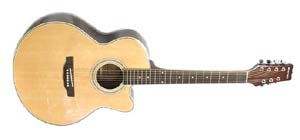
Mikhail Ivanovich Glinka
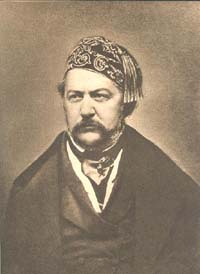
The founder of Russian classical music, Mikhail Ivanovich Glinka, was also interested in the guitar. His acquaintance with Spanish folklore during a trip to Spain in 1845 was largely thanks to Spanish guitarists. The tunes of F. Castillo and especially F. Murciano, whom M. Glinka called “an amazing guitarist,” served him as material for creating such wonderful works as “Night in Madrid” and “Aragonese Jota”.
M. Glinka not only knew the guitar and many guitarists well, but also played it himself. The famous composer and pianist A. Dubuk recalled: “Mikhail Ivanovich Glinka often listened to the playing of O. A (the famous opera singer O. A. Petrov, a student of Sihra), it happened that he himself took the guitar and picked out chords on it”2.
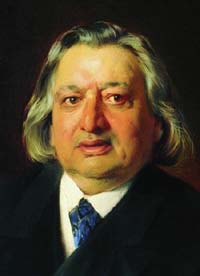
Russian opera singer and guitarist Osip Afanasyevich Petrov (1807-1878). Portrait by Konstantin Makovsky (1870)
It is interesting that the outstanding singer Osip Afanasyevich Petrov (1807-1878) was an outstanding guitarist who studied with A. Sihra. The undoubted recognition of his achievements is evidenced by the fact that A. Sihra placed his arrangement of the Haberbir etude in his School. O. Petrov learned to play the guitar in early childhood. Interesting facts about this, as well as about the existence of the guitar in the Russian provinces, are given by V. Yastrebov: “It should be assumed that Petrov learned to play the guitar while still in the cellar... The guitar then enjoyed the general love of the urban population and only around 1830 gave way to the harmonica. Some guitarists reached remarkable perfection and became famous in several provinces; Kladovshchikov, who brought wine from the Don to Elizavetgrad, also belonged to such famous players; he himself became acquainted with this art in Moscow from some local virtuoso (from M. Vysotsky - A. Sh., L. M.), and from him... Petrov learned and learned so well that there was no better guitarist in the whole city : “His fingers ran along the strings as if they were alive, in the words of one Elizavetgrad acquaintance, Osip Afanasyevich.”3
Of course, his uncle's cellar was not the place for a gifted young man. Chance brings him together with a visiting theater troupe, which he joins in 1826. On October 10, 1830, Petrov made his debut on the stage of the Mariinsky Theater in St. Petersburg. Hard work and talent soon made O. A. Petrov one of the best performers of opera roles.
The great singer loved the guitar until the end of his life. In St. Petersburg, he became a student of A. Sihra, having the most serious intentions regarding the guitar. He had friendly relations with V. Morkov, V. Sarenko and other guitarists.
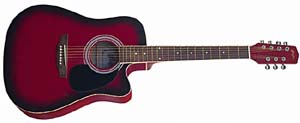
The seven-string guitar rendered great influence on the formation of Russian romance lyrics. Accompanied by a guitar, romances were sung both in a high-society salon, and in the modest home of a craftsman, and sometimes in a peasant hut!
The seven-string guitar also had a certain influence on Russian piano music; this can be seen especially clearly in the work of A. Dubuc, who, impressed by the playing of M. Vysotsky, began to actively develop folklore material.
The end of the 18th - mid-19th centuries was the heyday of the art of playing the seven-string guitar, a unique cultural layer of enduring value.
Notes
1 See: Ladies' magazine. 1827. No. 7. P. 18.
2 Guitarist. 1904. No. 5. P. 4.
3 Yastrebov V. Osip Afanasyevich Petrov/Russian antiquity. 1882. T. XXXVI.
You will need
- Guitar
- Fork
- Chord Chart for 7 String Guitar
- Tablatures
- Digitalizations
- Sheet music for seven-string guitar
Instructions
Tune your guitar. The seven-string guitar is built on the tonic triad of G major. The first string is tuned as D of the 1st octave. Test it with a tuning fork. If you have a regular tuning fork with antennae, which produces the sound A, then the first string, clamped at the seventh fret, should sound in unison with the tuning fork. The following strings are tuned as B-sol-re-si-sol-d.
The seven-string guitar has a significant advantage over other instruments. It can be used with or without barre to play almost all chords using the same position of the fingers of the left hand. Start with the chords that have the most open strings. The main chord is G major. It can be played without plucking the strings, but you can use different inversions - for example, plucking the first, fourth or seventh string at the fifth fret.
Learn to take the barre. Barre is a guitar technique when the index finger of the left hand pinch part of the strings (small barre) or all (big barre). On a seven-string guitar The barre can be played with the thumb of the left hand, which clamps the bass strings on the desired fret. The neck of the guitar actually lies in the palm of your hand.
Learn basic chords in G major and G minor. This is the tonic triad, as well as the triads of the fourth and fifth degrees - C major and D major. Both of these chords can be played using barres on the fifth and seventh frets. In general, barre for a seven-string guitar is very important, since all major chords are easiest to play using this technique. The G minor chord is played with a barre at the third fret, and the first, fourth and seventh strings are plucked at the fifth fret. All other minor chords can be played in exactly the same position.
Learn to play the seventh chord. For example, an A major seventh chord is played with a barre on the second fret, and the first or fourth string is plucked with the little finger or ring finger on the fifth fret. Try playing the remaining seventh chords using barre on different frets. The seventh chord uses the index and little fingers, or middle finger. With the rest you can try clamping other frets. You will get different chords that can be useful when choosing an accompaniment.
Try playing without barre. Build the G major chord you already know on closed strings. The first string is plucked with the little finger on the fifth fret, the second with the index finger on the third, and the third with the middle finger on the fourth fret. You can try it with your ring finger different sounds on the bass and listen to what happens - this will be useful in any case when playing chords.
At the same time, master the techniques of playing with your right hand. Start with simple fingerpicking, with ascending and descending arpeggios. Arpeggios are played sequentially with all fingers right hand except for the little finger. Then learn how to play simple combat. The fingers of the right hand touch the strings with the back side, mainly with the nails. The thumb then touches the bass string at the right time. Play in different rhythms. Try playing a waltz, march and something lyrical. When you learn to confidently play a simple stroke, try a more complex one, when the fingers of your right hand folded together touch the strings with both the nails and the phalanges on the side of the palm.
Once upon a time, the Russian seven-string guitar was very popular in various circles of society. It was played in high society salons and on working-class outskirts. Unfortunately, in lately This instrument is not played very often. Meanwhile, the seven-string guitar has no less possibilities than the now very popular Spanish six string guitar. However, before you start learning the features of this tool, you need to configure it.
You will need
- Tuning fork or piano keyboard
Instructions
Some performers tune guitar under your voice so that you can accompany yourself using the simplest chords. But it's best to set up guitar by tuning fork. The first string of a seven-string guitar sounds like the D of the first octave. Accordingly, if you have a tuning fork with antennae, then you need to pinch the first string at the seventh fret and tune it in unison with the sound of the tuning fork. The first string pressed at the seventh fret produces an A sound.
Hold the second string at the third fret. It should coincide with the open first string, that is, give the sound D. The open second string sounds like a small octave B.
An open third string produces a G sound. This means that if you hold it on the fourth fret, it will sound in unison with the open first fret. At the same time, for a well-tuned guitar, the same sounds taken on different strings and in different positions should coincide with each other. Check how much the third string is tuned in relation to the first. Play the first string at the fifth fret. With the third string open, it should sound an octave.
The fourth string makes the sound D and is tuned to the same octave as the first. Moreover, if you hold it on the third fret, it should coincide with the open third string. Check its alignment with the first string by holding it at the twelfth fret. The strings should sound in unison.
The fifth and sixth strings are tuned like the second and third. Press the fifth on the third fret so that it produces the same sound as the open fourth. The sixth string is clamped at the fourth fret and sounds in unison with the open fifth. In this case, the fifth string should give a clear octave from the second, and the sixth - from the third. You can check the tuning of these strings by holding each string at the twelfth fret. They should be in unison with the second and third strings.

Greetings to the readers of our site!
Today I would like to discuss the topic with you seven-string electric guitars. Beginner guitarists often ask questions about what such guitars are for, what they sound like, what kind of tuning they have, and much more.
First of all, it should be noted that six-string and seven-string guitars are practically the same structurally. One string is added and the neck expands because of this. Everything else is identical. Most often, active and passive pickups are used as pickups on such instruments. Some examples use a fixed bridge, while others use .
Seven-string electric guitar ESP
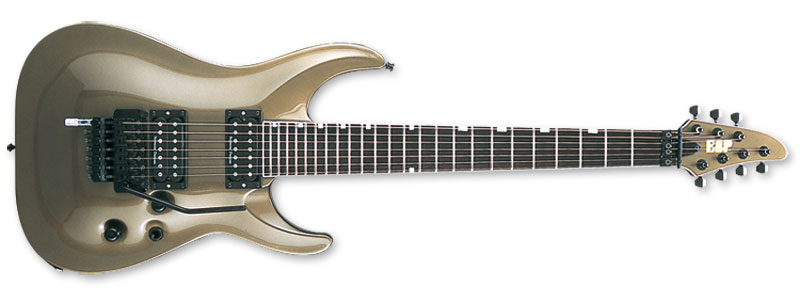
To the classic tuning of the six-string guitar E[E]-B[H]-G[G]-D[D]-A[A]-E[E], another bass string B[H] is added. But the tuning for a seven-string guitar can be used in different ways depending on musical tasks, and there will be a separate article about this on our website.
Seven string guitars are used especially actively in heavy styles of music such as death metal, nu-metal, metacore, etc. Manufacturers try to make their sound dense, heavy, monolithic. Many epithets can be chosen, but it is better to listen to this sound yourself, and a demo video will be presented below.
I would like to note the fact that on a seven-string guitar you can play not the most brutal music, but, for example, hard rock and you will not feel any inconvenience or restrictions. On the contrary, the guitar's capabilities expand with the addition of the seventh string.
But if you are thinking about buying such a guitar, decide clearly whether you need exactly such an instrument.
Go to a music store in your city, try playing seven-strings, listen to their sound and draw conclusions.
Many well-known guitar manufacturing companies represent in their model lines seven-string copies. Among such companies are the following:
Here you can tune a seven-string guitar through a microphone using online tuner.
And also tune your guitar by ear using the recorded sounds of guitar strings in different tunings for 7-string guitar.
How to tune a 7 string guitar?
A seven-string guitar is tuned in the same way as a six-string guitar.
The only difference is that a 7-string guitar has one more, thickest string - the lower B (B).
In order to tune it, you need to hold down the 6th string E (E) at the 5th fret, as a result of which we get the sound of an open 7th string.
Instructions for tuning a guitar with an online tuner:
1.Connect a microphone
2. Click the Allow button on the tuner.
3. Play one note and look at the tuner.
The tuner will display the name of the note played and the accuracy of its tuning.
If the green pointer on the scale deviates to the right of the letter, then the string is overstretched; if it deviates to the left of the letter, then it is understretched.
You need to change the tension of the string by releasing or tightening it with pegs.
If the sound of the guitar string matches the standard, the letter will turn green.
And this means that this note sounds correctly, and it will be possible to tune other strings.
Seven-string guitar tuning
There are many different guitar tuning options for a seven-string guitar: the main ones are - Standard, Russian, and also - Lower tunings , Dropped tunings and others.
1.Standard tuning of a seven-string guitar - BEADGBE
- 1st string - E (E) (the thinnest)
- 2nd string - B (B)
- 3rd string - G (G)
- 4th string - D (D)
- 5th string - A (A)
- 6th string - E (E)
- 7th string - B (B)
2. “Russian” system - d¹bgdBGD
Mainly used by bards. The guitar in this tuning is tuned to a G major chord on open strings. This system is also called "Open G".
- 5th string - note B (B) large octave
3. Gypsy minor scale - d¹b♭gdB♭GD
Its difference from the standard Russian tuning is that instead of a major quartet-sixth chord, a minor one is used: the 2nd and 5th strings are lowered by a semitone.
In this tuning, the strings are tuned as follows:
- 1st string - note d¹ (D) of the first octave
- 3rd string - note g (Sol) small octave
- 4th string - note d (D) small octave
- 5th string - note B♭ (B-flat) large octave
- 6th string - note G (Sol) large octave
- 7th string - note D (D) large octave
Naturally, with such tunings, the chord fingerings will differ from those usual for 6-string guitars.
4. Lower tunings of a seven-string guitar
Some guitarists tune their instruments lower or higher than standard to match the sound of the instrument when played to the player's voice.
Bb tuning- Bb-Eb-Ab-Db-Gb-Bb-Eb - Adjustable to a semitone lower than standard.
A tuning- A-D-G-C-F-A-D - A tone lower than standard.
G# tuning- G#-C#-F#-B-E-G#-C# - 3 semitones lower than standard.
G tuning- G-C-F-A#-D#-G-C - 2 tones lower than standard.
F# tuning- F#-B-E-A-D-F#-B - 5 semitones lower than standard.
5. Dropped seven-string guitar tunings
In these tunings, the seventh string is tuned a tone lower than normal.
Drop A- A-E-A-D-G-B-E - Same as standard, but with the seventh one tone lower.
Drop Ab- Ab-Eb-Ab-Db-Gb-Bb-Eb - A semitone below Drop A.
Drop G- G-D-G-C-F-A-D - One tone lower than Drop A.
Drop F#- F#-C#-F#-B-E-G#-C# - 3 semitones below Drop. A
6. Other seven-string guitar tunings
6.1.Stroy Sergey Nikitina (performer, composer) - d¹ b♭gdсGD:
1st string - note d¹ (D) of the first octave
2nd string - note b♭ (B flat) small octave
3rd string - note g (Sol) small octave
4th string - note d (D) small octave
6th string - note G (Sol) large octave
7th string - note D (D) large octave
6.2.Construction of Bulat Okudzhava and Vera Matveeva - d¹bgdсGD:
1st string - note d¹ (D) of the first octave
2nd string - note b (B) small octave
3rd string - note g (Sol) small octave
4th string - note d (D) small octave
5th string - note from (C) small octave
6th string - note G (Sol) large octave
7th string - note D (D) large octave
6.2. And others:
Open E- BEBEG#BE
Open A- AEAEAC#E
Open D-ADADF#AD
Open B- BD#BD#F#BD#
Drop D Drop A- ADADGBE
C 6th-CEGCGAE
Jazz tuning- AEADGBE
Lute tuning- BEADF#BE
Blues tuning (Fourths tuning)- BEADGCF
Jimmy Page tuning- ADADGAD
Rain Song tuning-CDGCGCD
Major 3rds-EAbCEAbCE
GDAEBGbA- modified Robert Fripp New Standard Tuning
